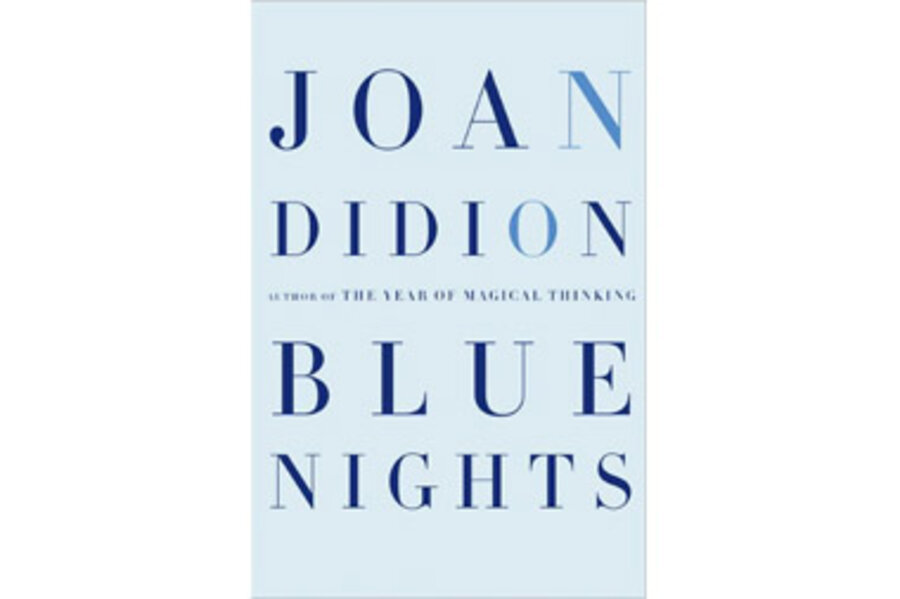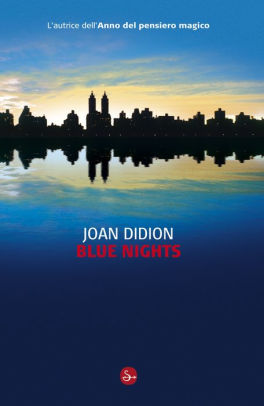Didion later wrote about Quintana's death in the 2011 book Blue Nights. As of 2005, Didion was living in an apartment on East 71st Street in New York City. Her nephew Griffin Dunne directed a documentary about her, Joan Didion: The Center Will Not Hold; it was released by Netflix on October 27, 2017. Richly textured with bits of her own childhood and married life with her husband, John Gregory Dunne, and daughter, Quintana Roo, this book by Joan Didion examines her thoughts, fears, and doubts regarding having children, illness, and growing old. Blue Nights opens on July 26, 20.
- Blue Nights By Joan Didion
- Joan Didion Family
- Blue Nights Joan Didion Amazon
- Joan Didion Daughter Quintana
Blue Nights Joan Didion, 2012 Knopf Doubleday 208 pp. ISBN-13: 387 Summary From one of our most powerful writers, a work of stunning frankness about losing a daughter. None of us can escape death, but Blue Nights shows how Didion has, with the devastating force of her penetrating mind, learned to simply abide.” — Elle “In this supremely tender work of memory, Didion is paradoxically insistent that as long as one person is condemned to remember, there can still be pain and loss and anguish.” —Christopher Hitchens, Vanity Fair.
Overview
 A New York Times Notable Book and National Bestseller
A New York Times Notable Book and National BestsellerFrom one of our most powerful writers, a work of stunning frankness about losing a daughter.
Richly textured with memories from her own childhood and married life with her husband, John Gregory Dunne, and daughter, Quintana Roo, this new book by Joan Didion is an intensely personal and moving account of her thoughts, fears, and doubts regarding having children, illness and growing old.
Blue Nights By Joan Didion
As she reflects on her daughter’s life and on her role as a parent, Didion grapples with the candid questions that all parents face, and contemplates her age, something she finds hard to acknowledge, much less accept. Blue Nights—the long, light evening hours that signal the summer solstice, “the opposite of the dying of the brightness, but also its warning”—like The Year of Magical Thinking before it, is an iconic book of incisive and electric honesty, haunting and profound.
'Incantory.... A beautiful condolance note to humanity about some of the painful realities of the human condition.' —The Washington Post
Joan Didion Family

Stop all the clocks, cut off the telephone,
Prevent the dog from barking with a juicy bone,
Silence the pianos and with muffled drum
Bring out the coffin, let the mourners come.
W.H. Auden, “Funeral Blues”
Blue Nights by Joan Didion is a book of memories. In 2003, Joan Didion’s daughter went into the hospital with pneumonia, eventually slipping into a coma. While her daughter was unconscious, Didion’s husband died. Within a year, Quintana had died, also.
Blue Nights Joan Didion Amazon
The story of that year is the now very familiar book to Didion readers, The Year of Magical Thinking. A bestseller, the book rawly explored the time during which Didion lost everyone. She followed its publication with an extensive and grueling touring schedule and worked with Vanessa Redgrave to turn it into a one-woman show on Broadway (which was mounted here in Kansas City by The Living Room).
But such overwhelming grief does not simply dissipate. Didion writes Blue Nights as a follow-up, a continuation, of the story. She writes it as a way to express loss, the kind of loss that one feels in the absence of blue nights.
Blue nights, she writes in the outset, are where “the twilights turns long and blue,” that time of year around the weeks before and after the Summer Solstice where the light never seems to fully die:

During the blue nights you think the end of day will never come. As the blue nights draw to a close (and they will, and they do) you experience an actual chill, an apprehension of illness . . . This book is called “Blue Nights” because at the time I began it I found my mind turning increasingly to illness, to the end of promise, the dwindling of days, the inevitability of the fading, the dying of the brightness. Blue nights are the opposite of the dying of the brightness, but they are also its warning.
Joan Didion Daughter Quintana
There is something mystical about the dying of the light at this autumnal time of year that stirs the mind and gives easy entry to Didion’s melancholy.
As the earth slips into its seasonal slumber, one’s thoughts track to the cycles of our own lives, the way we surge and ebb and then flow into quietude. Our thoughts pulse through our beings when action falls away, and Didion’s prose embodies that. Blue Nights is the story of a mind wrestling with loss, devastation, age, debility, and the powerfully oppressive need to continue to live.
While The Year of Magical Thinking contends with how to recapture the time before everything changed, Blue Nights is the recognition that these things have passed beyond recovery.
Didion delves deeply into Quintana’s life to try and identify the point at which the loss of Quintana began. Even though she died of a seemingly happenstance illness, Didion writes as one tortured by the thought that she was the executioner and she writes as one befuddled as now being the remnant.
Blue Nights is an elegant treatise on grief and the difficulty of sustaining our lives, of sustaining our momentum forward, after the mourners have gone and the casseroles have all been eaten.

About the Author
Melissa Carle is a Support Specialist with the KC-LSP and thinks life is too short to read a book that doesn't excite you in the first 40 pages. She likes cooking, herb gardening, and, of course, reading and thinks all good books, fiction and non-fiction alike, share one thing in common: they're just a good yarn.
